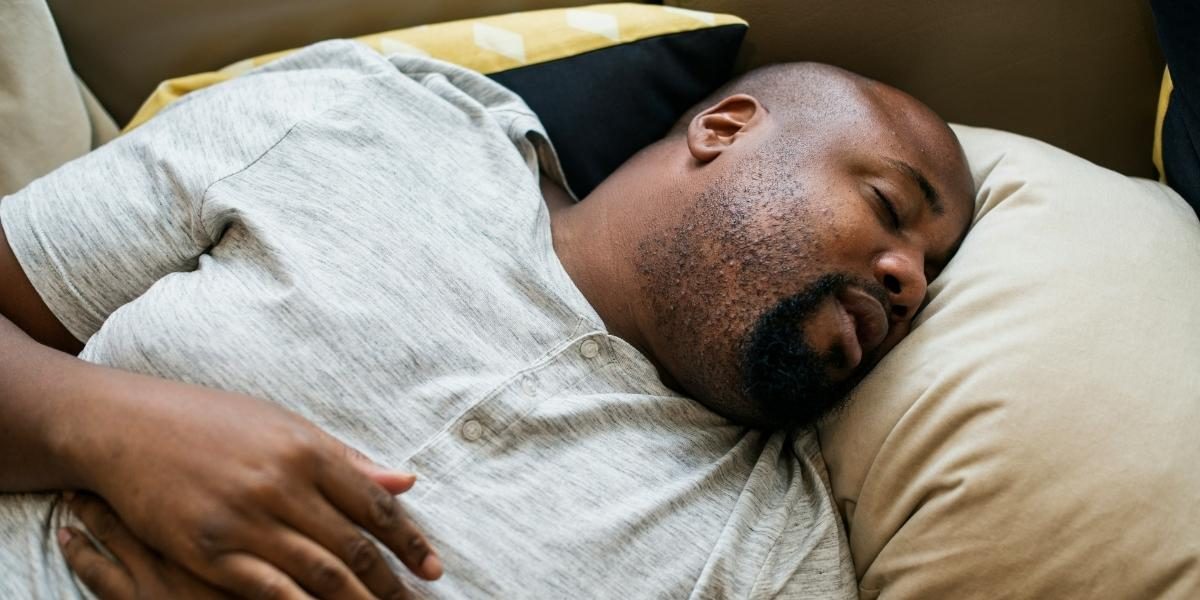Understanding Sleep Apnea: Causes, Types, and Consequences
Sleep apnea is a common but often undiagnosed sleep disorder that affects millions of people worldwide. Characterized by interruptions in breathing during sleep, sleep apnea can have serious consequences for both physical and mental health. This article will explore the causes, types, and potential consequences of sleep apnea, as well as ways to manage and treat this condition.
Read Also: Improve Your Sleep with the Calming Ritual of Bedtime Reading
What Causes Sleep Apnea?
Sleep apnea occurs when there is a temporary disruption in the airflow during sleep, causing the individual to stop breathing for brief periods. Experts explain that the primary cause of sleep apnea is an obstruction or narrowing of the airway, but other factors can contribute to the condition.
The most common cause of sleep apnea is obstructive sleep apnea (OSA), which happens when the muscles in the throat relax excessively during sleep, blocking the airway. Risk factors for OSA include obesity, enlarged tonsils or adenoids, nasal congestion, and physical abnormalities such as a thick neck or large tongue.
Another type of sleep apnea, central sleep apnea, occurs when the brain fails to send the proper signals to the muscles that control breathing. This can happen due to underlying health conditions such as heart failure, stroke, or neurological diseases. Research suggests that central sleep apnea is less common than OSA, but it is equally concerning, particularly in individuals with other serious health problems.
In some cases, complex sleep apnea occurs when both obstructive and central sleep apnea are present. Healthcare professionals note that this type of sleep apnea is typically more difficult to treat and may require a combination of therapies.
Types of Sleep Apnea
There are three primary types of sleep apnea: obstructive sleep apnea (OSA), central sleep apnea, and complex sleep apnea. Understanding the differences between these types can help individuals recognize symptoms and seek appropriate treatment.
Obstructive Sleep Apnea (OSA)
OSA is the most common type of sleep apnea, affecting millions of people worldwide. It occurs when the muscles in the throat relax too much during sleep, causing a temporary blockage of the airway. Experts explain that this blockage prevents adequate airflow, resulting in interrupted sleep, snoring, and oxygen deprivation.
People with OSA may experience loud snoring, gasping, or choking during sleep, often waking up feeling tired or unrested. Studies show that individuals with OSA are at a higher risk for developing high blood pressure, heart disease, and stroke due to the strain placed on the cardiovascular system by frequent interruptions in breathing.
Central Sleep Apnea
Central sleep apnea occurs when the brain fails to send proper signals to the muscles that control breathing. Healthcare providers highlight that this type of sleep apnea is not caused by physical obstruction but by a malfunction in the brain’s respiratory control center. Central sleep apnea can occur in individuals with neurological disorders or chronic health conditions like heart failure.
Unlike OSA, central sleep apnea does not typically cause snoring, but it can result in irregular breathing patterns and fragmented sleep. Research indicates that people with central sleep apnea may experience daytime fatigue, difficulty concentrating, and an increased risk of cardiovascular complications.
Complex Sleep Apnea
Complex sleep apnea, also known as treatment-emergent central sleep apnea, is a combination of obstructive and central sleep apnea. It occurs when a person with OSA develops central sleep apnea after using a continuous positive airway pressure (CPAP) machine to treat the obstructive component. Doctors suggest that this condition requires specialized treatment to address both types of apnea simultaneously.
The Consequences of Sleep Apnea
Sleep apnea, if left untreated, can lead to a wide range of health problems, both physical and mental. The frequent interruptions in breathing can cause a significant reduction in the quality of sleep, which in turn affects overall health and well-being.
Cardiovascular Problems
One of the most significant risks associated with sleep apnea is its impact on the cardiovascular system. Studies show that people with untreated sleep apnea are at a higher risk for developing high blood pressure, heart disease, and stroke. The repeated drops in oxygen levels during sleep put a strain on the heart and blood vessels, leading to increased stress on the cardiovascular system.
Daytime Fatigue and Cognitive Impairment
The interrupted sleep caused by sleep apnea can lead to chronic daytime fatigue, making it difficult for individuals to stay awake and alert during the day. Sleep specialists note that this fatigue can significantly impair cognitive function, including memory, concentration, and decision-making skills. This can affect an individual’s ability to perform well at work or in other daily tasks.
Mental health experts suggest that untreated sleep apnea is associated with an increased risk of depression and anxiety. The lack of restorative sleep can contribute to mood swings, irritability, and emotional instability.
Weight Gain and Metabolic Issues
There is a strong connection between sleep apnea and weight gain. Research indicates that people with sleep apnea are more likely to gain weight or struggle with weight loss. This is partly due to the disruption of metabolism and the hormonal imbalances caused by sleep deprivation. Moreover, weight gain can exacerbate the severity of sleep apnea, creating a vicious cycle.
Sleep apnea has been linked to an increased risk of developing diabetes. The condition can affect insulin resistance and glucose metabolism, contributing to higher blood sugar levels.
Diagnosing and Treating Sleep Apnea
Diagnosing sleep apnea typically involves a thorough evaluation of symptoms, medical history, and sometimes a sleep study. Doctors recommend that individuals experiencing symptoms such as loud snoring, choking during sleep, or excessive daytime fatigue undergo a sleep study, either at home or in a sleep clinic, to assess the severity of the condition.
Treatment options for sleep apnea vary depending on the type and severity of the disorder. For obstructive sleep apnea, the most common treatment is the use of a CPAP machine, which delivers continuous air pressure to keep the airway open during sleep. Other options include lifestyle changes, such as weight loss, sleep position adjustments, and avoiding alcohol before bed.
For central sleep apnea, treatment may involve using a bi-level positive airway pressure (BiPAP) machine or adaptive servo-ventilation (ASV), which adjusts the air pressure to match breathing patterns. Doctors emphasize that managing underlying health conditions, such as heart disease, is essential for treating central sleep apnea effectively.
Read Also: The Truth About Oversleeping: Consequences and How to Break the Cycle
In some cases, surgery may be necessary to correct structural issues in the airway that contribute to sleep apnea. Surgical options include removal of excess tissue from the throat or the use of a dental appliance to reposition the jaw during sleep.
Sleep apnea is a serious condition that can have far-reaching consequences for both physical and mental health. Understanding the causes, types, and potential consequences of sleep apnea is crucial for recognizing symptoms and seeking appropriate treatment. Healthcare professionals recommend that individuals experiencing signs of sleep apnea consult with a medical provider to determine the best course of action for diagnosis and management.








